Art as a sanctuary
Voices from Palestine
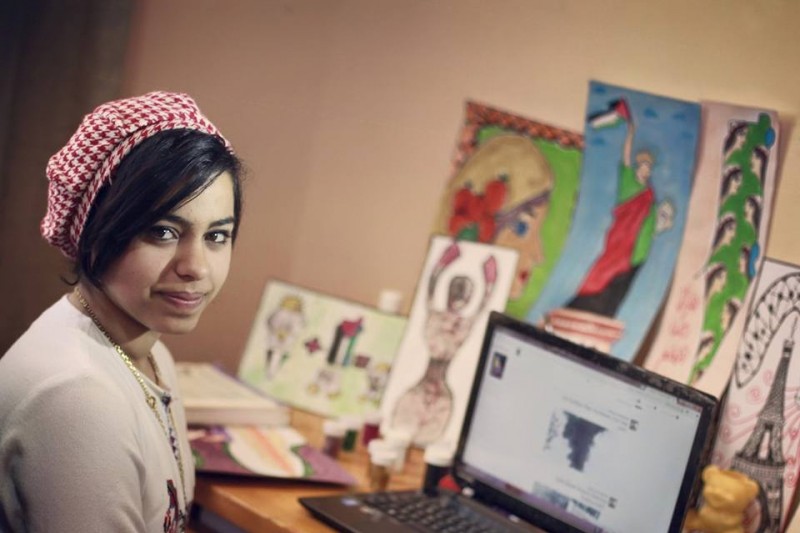
On first glimpsing the painting, you would be forgiven for considering it yet another artist’s umpteenth attempt to recreate the iconic Mexican painter Frida Kahlo. Upon peering more closely however, you will observe that this particular Frida happens to be dressed in traditional Palestinian dress and jewellery, and her almond-shaped eyes are melancholic and distant. In another painting of another pensive, similarly almond-eyed, woman, white doves flutter about her while she stoically holds an open cage, having set them free.
The art of Gaza
Both paintings delineating Palestinian identity and an overpowering desire of freedom, are the work of 17-year-old artist Malak Mattar who along , just like with many other young Palestinian artists, is engaging with the traumas they are undergoing through the medium of art. Whether it is through using graffiti and street art as a powerful political tool of expression, or painting and photography to reproduce their inner lives, this group of artists are accessing all kinds of media. Several NGOs and cultural organisations are also playing a crucial role in facilitating what have been often strongly cathartic experiences for these artists in their formative years.
Mattar, who studies and lives in Gaza City, taught herself to paint at the age of 14, during the 51st day of Israel’s assault on Gaza in the summer of 2014. “I still hadn’t healed from the first and second wars when the last war happened. It was arduous and depressing, not easy to deal with,” she states, her best friend having passed away in the conflict. What was initially an attempt to kill time while escaping the horrors of the war unfolding outside became a source of healing. “Art was a means to relieve and release my negative feelings towards everything,” Mattar says.
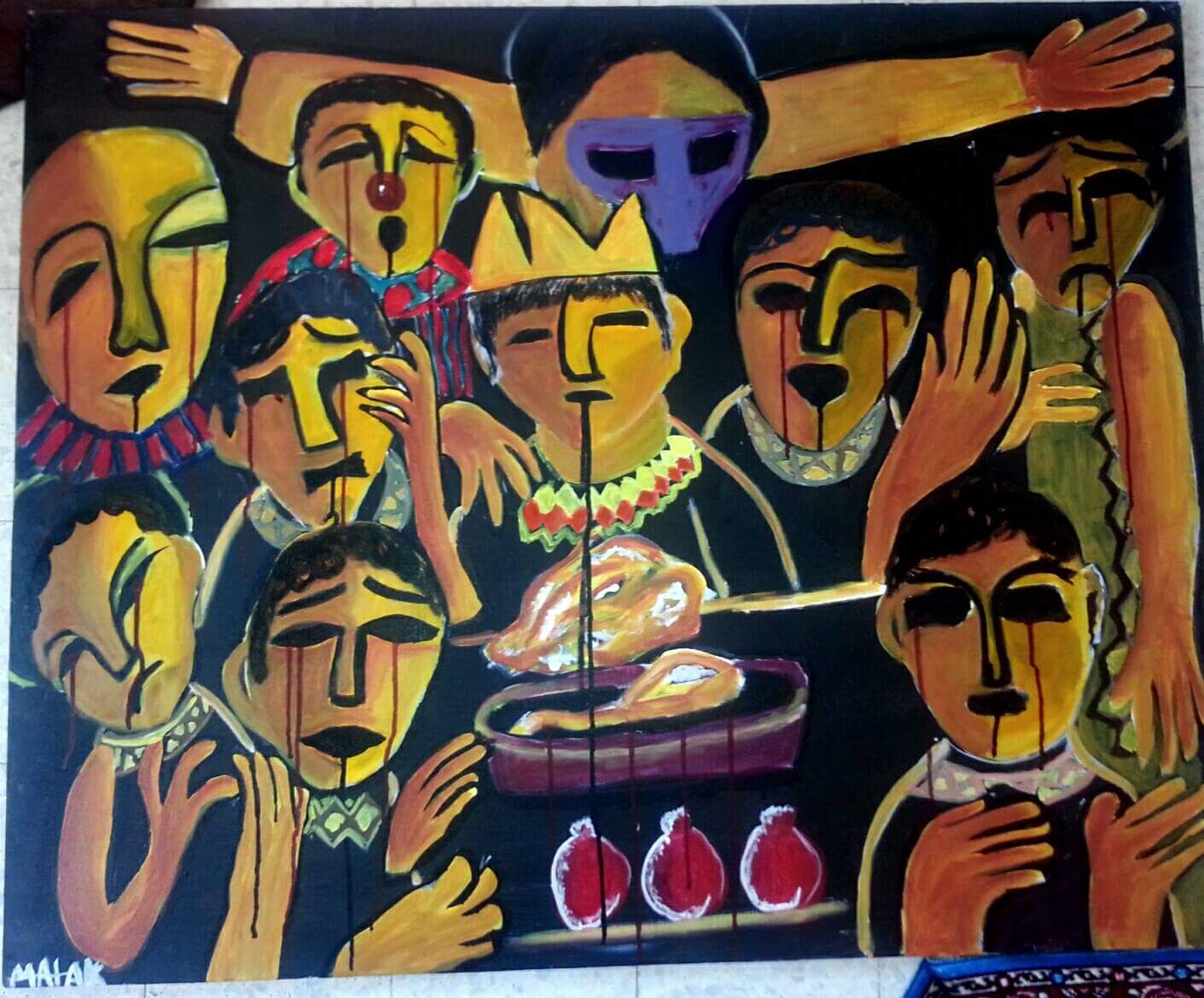
Her raw, textured strokes, combined with usage of traditional Palestinian motifs, have been compared to Picasso in style. Having painted 80 works in acrylics and oil so far, Mattar is very active on Facebook and has held a solo exhibition in Gaza; she also exhibited in East Jerusalem in June last year along with other artists from Gaza, being one of the few to get the rare Israeli travel permit. It was the first time she walked around a Jewish neighbourhood, her sole encounters with Jews previously having only been with Israeli soldiers.
She desires that her work challenges the long entrenched stereotypes held about Palestine to present an alternative narrative of her country. “It’s not just me, Malak, the artist, it is art of Gaza.”
“I don’t paint superficialities. I translate colour into emotions,” she says. “I have never tried to show something I don’t feel in my art. Why should I create happy paintings? If I am sad, I am sad.” Mattar says that her work encompasses not just the suffering of Gaza and her fellow Palestinians but that of the multiple kinds of suffering in the world. Eventually, she dreams of also helping refugee children in Lebanon discover art as a form of self-expression for communities torn apart by war, dissension or other disasters.
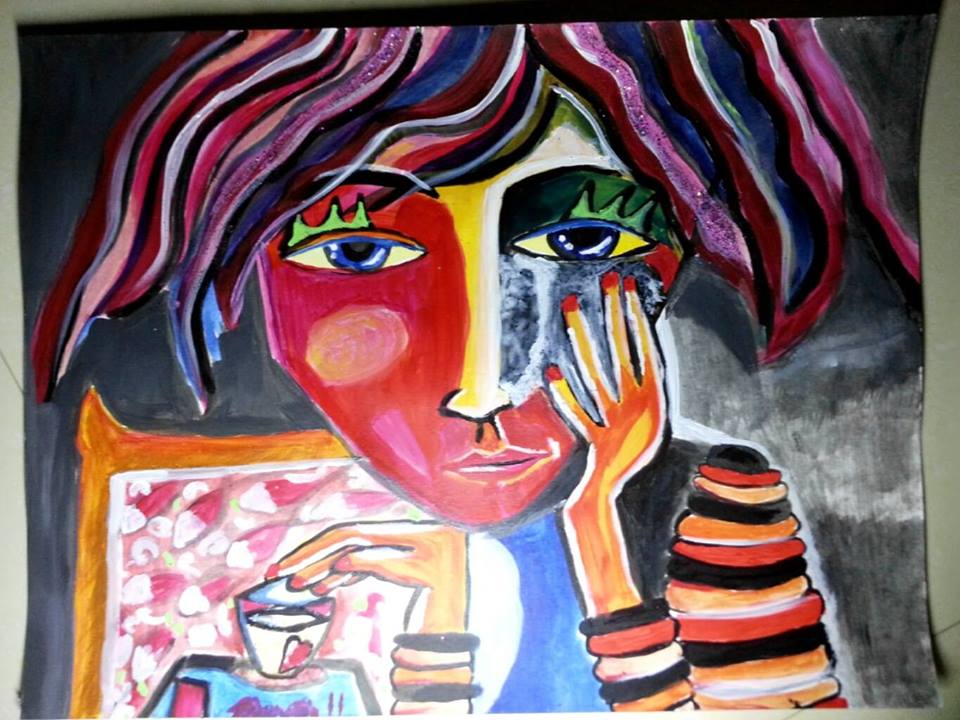
Upon glimpsing her paintings, the melancholy that pervades her work is entwined with a passionate desire to present and further the Palestinian cause. Speaking of her work being exhibited elsewhere, Mattar hopes that her and the other artists’ work will transplant the viewers in Gaza, telling them that “it is not just about blood, it is about hope.”
Canvasati: giving a platform to showcase art
It was a similarly passionate desire to locate and realise Palestinian identity which compelled Ramallah-based Rawan Assad, 30, to found Canvasati, an organisation which supports and enables young Palestinian artists to earn a living from their art. Her initiative seeks to raise awareness about the importance of art for the Palestinian cause, to document the struggle and culture and to provide affordable art to the majority of Palestinians.
“The [Israeli] occupation has definitely meant that we are losing our identity, history and art, and I felt that it was imperative to do something about it.”
Having been painting since childhood, Assad decided to return to it in 2014, after a long gap during which she pursued a corporate career. As she closely studied the art market, pricing and competition, she realised that there were 4,000 young and passionate but unemployed artists in Palestine, who had graduated from the various colleges and universities there. She decided to launch Canvasati, which now has 12 ambassadors forming the link between Canvasati and recently graduated artists, as well as 200 artists signed up with the organisation as a platform from which they can both showcase and sell their art. In addition to the social responsibilities of helping the artists, she emphasises once more on making art affordable. “The average monthly income of a Palestinian family is 600 dollars. If they would like to purchase two or even four paintings in their entire life, each painting must be priced between 100-150 dollars,” she says.
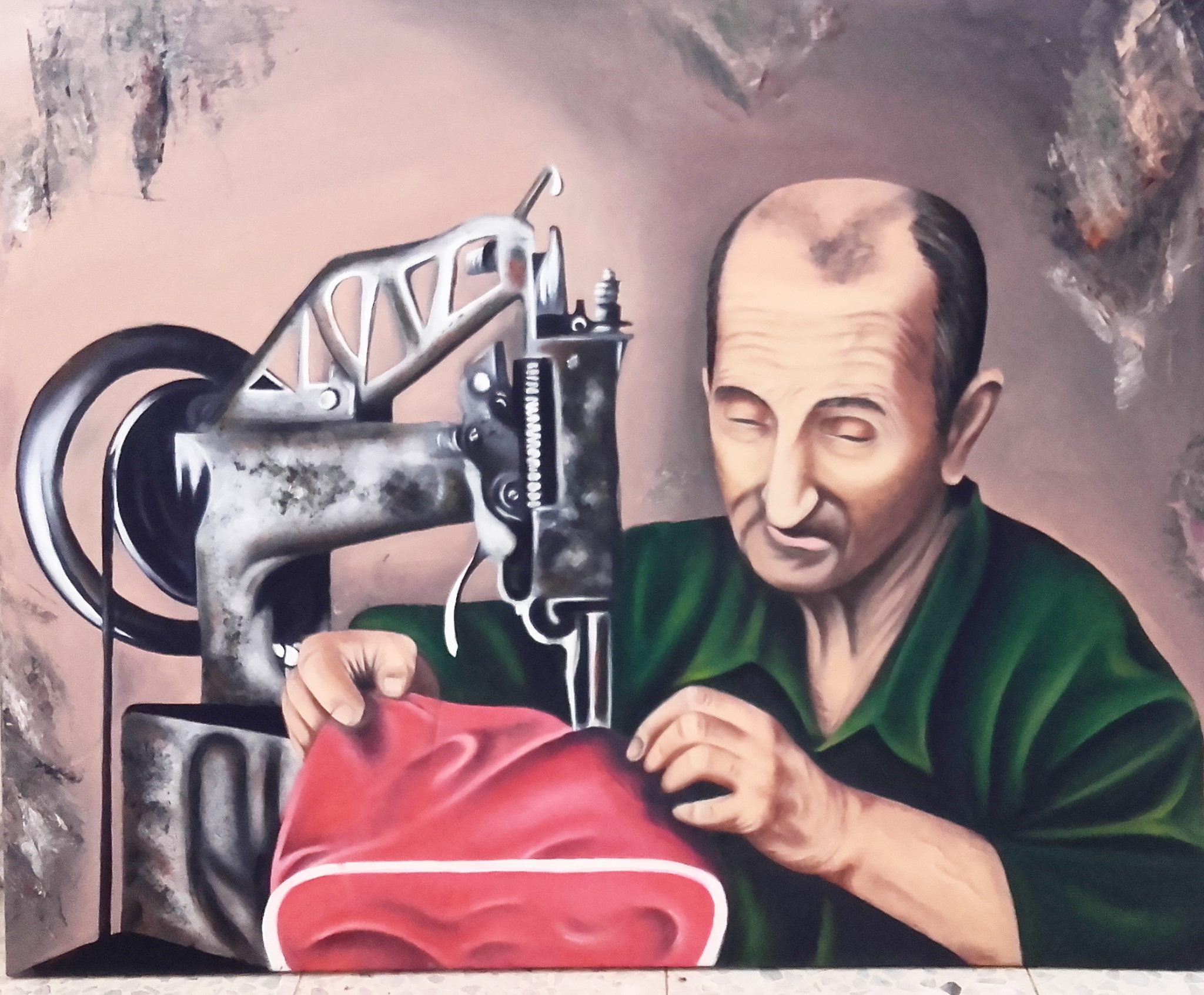
90% of Canvasati’s artists happen to be women and under 30. Assad notes that while she did face challenges from the contemporary Palestinian art society, even earning herself the sobriquet ‘Chinese Canvas Girl’, due to the fact that her art was so reasonably priced, she found support in the distinguished Palestinian artist Sulaiman Mansour, who simply told her that he wished that Canvasati had existed when he was starting out as a painter. “I would not have had to sell a painting to get married,” she recalls his words.
She is currently working on her most ambitious project yet, which is to create the world’s biggest wall mural upon the Apartheid Wall. “It will be 900 metres long and depict a map of historical Palestine from the north to south,” she says. Artists would populate the map with flowers, trees, buildings and people, all which irrevocably make up Palestine. Having already been in touch with Guinness World Records, she says that she has also received encouragement from the Palestinian Authority, mentioning that they believe in her idea.
It is evident that Canvasati has moved beyond being just a business venture for Assad, clearly being a concept dear to her heart, as she constantly ponders about her identity as a displaced person.“I am a refugee in my own country; I grew up in a refugee camp. My roots are in a village in East Jerusalem which my grandparents fled from in 1948,” she says. “I have no identity, rather I am fighting so hard to maintain my identity.
A photo is not just a photo
English literature graduate and self-taught conceptual photographer Mahmoud Alkurd, 23, meanwhile strongly believes in the power of storytelling through photography. He describes art as the language that he best articulates himself in.
“A photo is not just a photo. It is not just a frame, there is a story beyond the borders of the frame. In Gaza, art is always mixed up with politics. Lots of artists, whether they are young or old, painters or photographers, only seek to depict war and conflict.”
What individuates Alkurd’s work from such artists is that he chooses to abstract narratives with the assistance of his eight-year-old sister, Rawan, who features in the photographs. His minimal and often monochrome works simultaneously offer a commentary on the turmoil that the conflict has wrought in the land while planting a seed of hope for a better future through the upcoming generations. “I wanted to show the essence of the idea of being an artist in Gaza,” he says, adding that the presence of his sister in the works represents and sheds light on the children of Gaza and their futures. “These children live completely different lives to their peers in Europe or the US for example, exposed as they are to constant violence, conflict, and tension. I would like to focus on them leading the future, as opposed to potentially turning to a life of violence.”
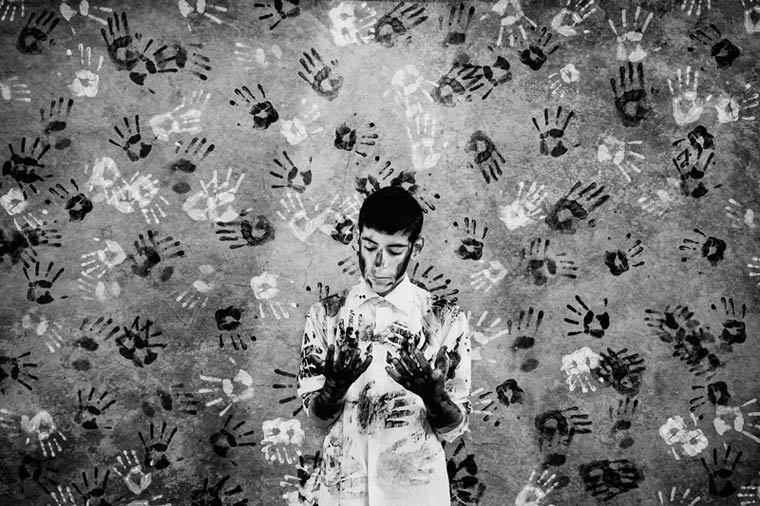
Like Mattar, he too stresses the need to present a counter-representation of Gaza. “We are alive, creating art and living life,” he says. Given the severe travel restrictions imposed upon Gaza’s population since 2007, Alkurd has found Facebook an immensely instrumental way to connect with fellow creatives across the world. “My photographs have winged their way to several exhibitions, and it is my dream to travel and meet everyone face to face one day.”
The role of art as a tool of political engagement
The role of art as a tool of political engagement, sanctuary and catharsis can be most clearly seen in this community of emerging Palestinian artists. The Internet’s formidable presence is also enabling a multitude of otherwise sequestered and hidden voices to articulate their thoughts, fears, frustrations and hopes across the world. When someone hangs a Malak Matar on the wall of their home or a photograph by Mahmoud Alkurd or any piece of a Canvasati artist, the colours speak their own language of courage and hope; the same that the Palestinians experience and demonstrate every day.
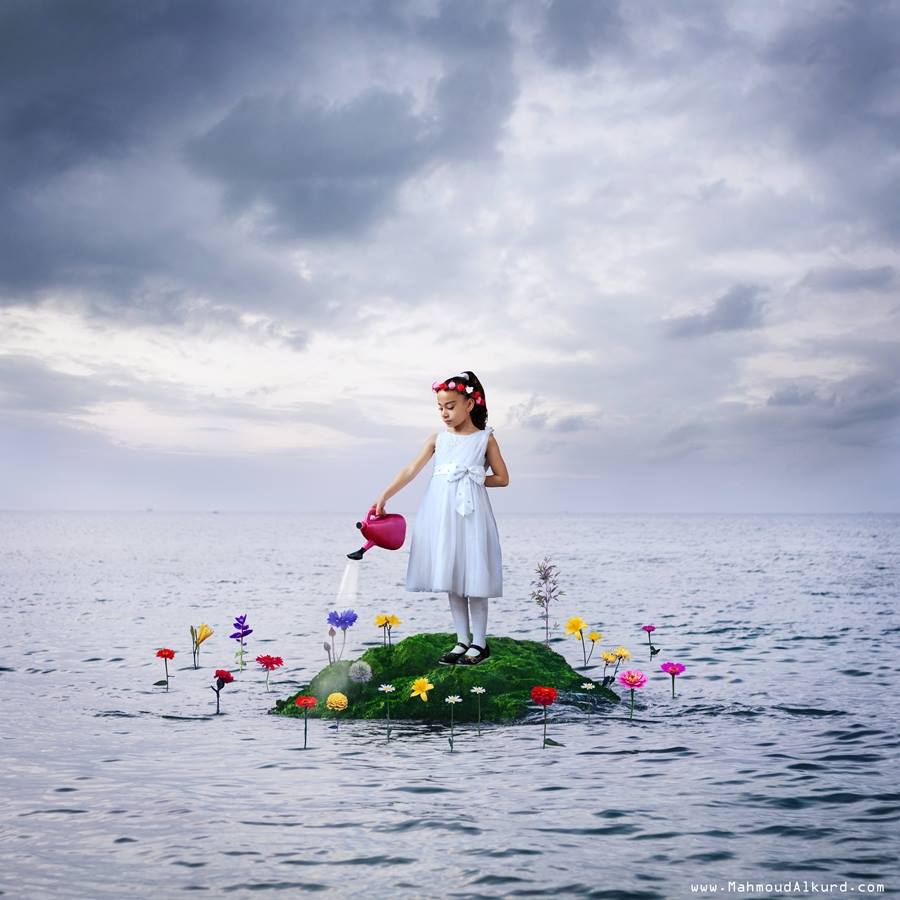
This article is part of the Web Arts Resistances project and platform coordinated by Babelmed in collaboration with Inkyfada, ONORIENT, Radio M and Tabasco video.







